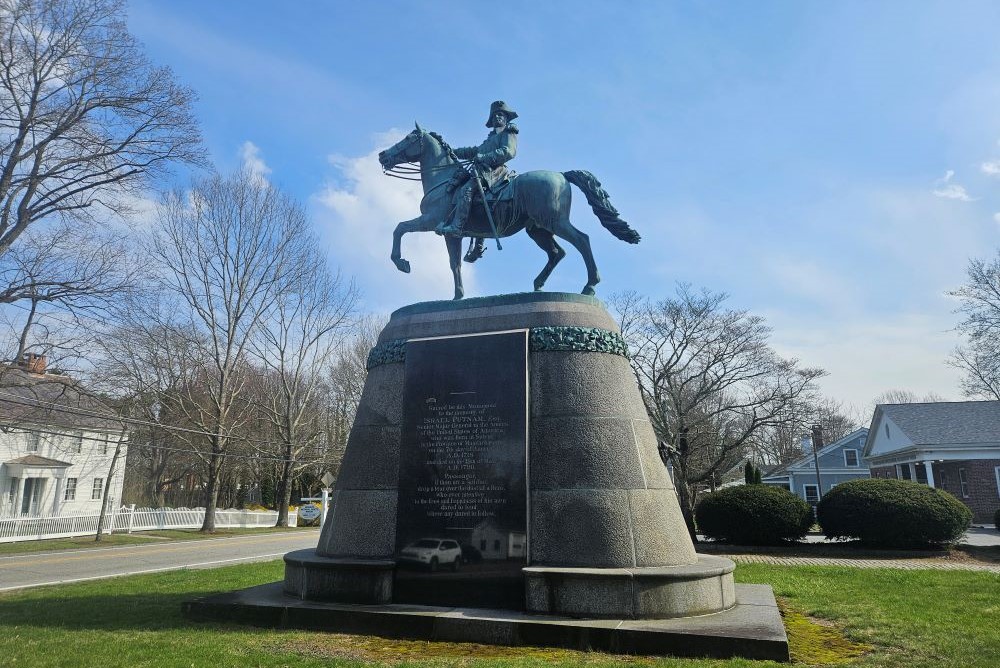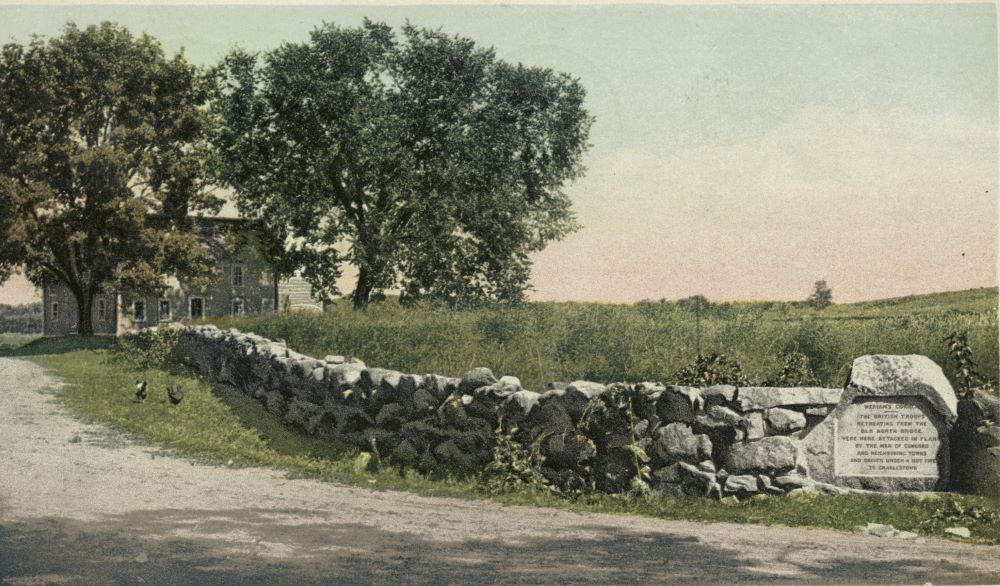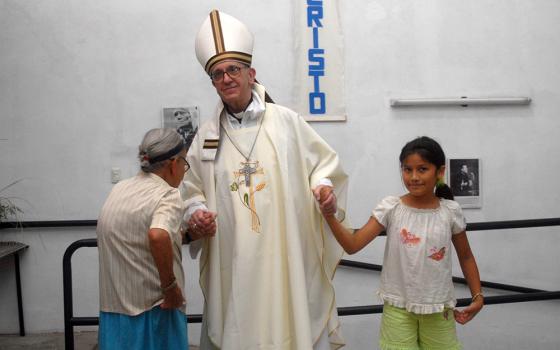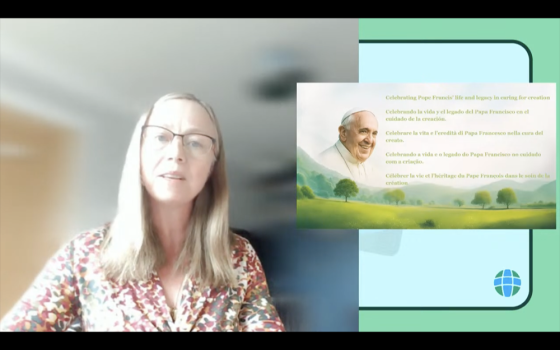
This equestrian monument in Brooklyn, Connecticut, honors Israel Putnam, a military officer of the American Revolution. Putnam is buried inside the monument. (NCR photo/Michael Sean Winters)
Saturday (April 19) was the 250th anniversary of the battles of Lexington and Concord. For a nation as young as ours, semiquincentennials are worthy of note.
Most of us learned the opening lines of Ralph Waldo Emerson's poem "Concord Hymn" in grade school:
By the rude bridge that arched the flood,
Their flag to April's breeze unfurled,
Here once the embattled farmers stood
And fired the shot heard round the world.
The poem was created for the dedication of the battle monument at Concord's North Bridge, and by the time the fighting got there, the "first shot" had already occurred some hours earlier at Lexington Green. In both locations, the word "battle" is excessive; skirmish would be more accurate.
Most of the fighting occurred later that day, as minutemen from the surrounding towns poured into the area and, starting at Meriam's Corner east of the village of Concord, began firing on the British troops as they marched back to Boston. I have often thought that we should call the day's fighting the "Battle of Route 2A," which mostly follows the road along which the minutemen, hiding behind stone walls and trees, fired on the Redcoats relentlessly. About 73 British regulars were killed that day, and another 174 wounded, compared to 49 colonials killed and 41 wounded.

On April 19, 1775, minutemen began firing on British troops at Meriam's Corner in Concord, Massachusetts, as part of the Battles of Lexington and Concord and the beginning of the American Revolutionary War. (Wikimedia Commons/Detroit Publishing Company)
The news reached the town where I live the next day. My hometown, Hampton, was not yet incorporated, and the land was divided between surrounding older towns. One of them, Brooklyn, was home to Israel Putnam, who famously left his plow in the field and rode to Cambridge to join what would soon become the Continental Army. He was commissioned as a major general and played a key role in the battles of Bunker Hill and Long Island.
Putnam belonged to the First Church of Brooklyn, which still stands in the center of town, a few hundred feet from Putnam's tomb. During the 1740s, Connecticut's Calvinists divided into two groups: the New Lights who welcomed the revivals known as the Great Awakening, and the Old Lights who shunned them. Brooklyn, along with most of eastern Connecticut, joined the New Lights. Having supported a revolution in religious practice, the New Lights were also the most enthusiastic supporters of the political revolution that engulfed the nation in 1775.
Godfrey Malbone Jr., son of a Newport, Rhode Island, merchant, was Putnam's archenemy. He not only shunned the New Lights, he belonged to the religious right of the time, the Anglicans, and he built an Anglican Church in Brooklyn! The Congregational Church was still established by law in Connecticut, and Anglicans were treated with great hostility precisely because they were viewed as too "Romish."
Longtime readers will recall a series I did back in 2014, looking at several books on the American Revolution, all of which examined, in part, the ways anti-Catholicism was in the political air the American colonists breathed, and which shaped their increasing hostility to British rule. Linda Colley's Britons: Forging the Nation 1707-1837 delved into the ways anti-Catholicism was deployed to overcome differences between the Scots and the English. Bernard Bailyn's seminal work, The Ideological Origins of the American Revolution, argued that country whig ideas united the various ideological currents of the time, and created a narrative that was especially potent in New England's colonies, all of which had been founded by religious dissenters. Patricia Bonomi's Under the Cope of Heaven: Religion, Society, and Politics in Colonial America explained the ways religious belief and practice stoked the fires of the American Revolution. And, Robert Emmett Curran's Papist Devils: Catholic in British America, 1574-1783, looked at the ways anti-Catholic prejudices were fed by, among other things, the French and Indian War and the British parliament's passage of the Quebec Act in 1774, which granted religious toleration to Catholics in Canada.
Advertisement
Anti-Catholicism was never the dominant factor driving Americans to take up arms against the mother country. There were not many Catholics to hate in colonial America. Tensions over taxes, political sovereignty and trade were all as or more important.
The farmers who fought on April 19, 1774, had their faults, to be sure. Putnam bought slaves to work his farmlands in Brooklyn. Settlers thought little of pushing Native peoples off their lands. The rights of women were far in America's future, although Rosemarie Zagarri's splendid biography A Woman's Dilemma: Marcy Otis Warren and the American Revolution highlights the life and thought of one woman who was conscious of, and vocal about, the disparate treatment of the sexes.
Nonetheless, every subsequent effort to extend human rights can look back to those brave men who stood up against the most powerful army in the 18th-century world, and be grateful for their courage. The American Revolution did not save the world, but it advanced the cause of freedom.
From now until Oct. 19, 2031, when we mark the final defeat of the British Army at Yorktown, Americans will be celebrating the 250th anniversary of the battles that brought the nation to birth. For all of our nation's flaws and failings, and all the evil and chaos of the present moment, we can still be glad those minutemen fired the shot heard round the world.







